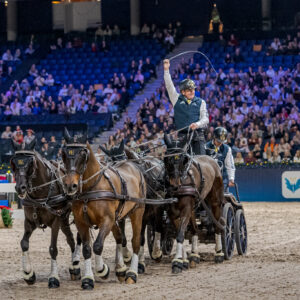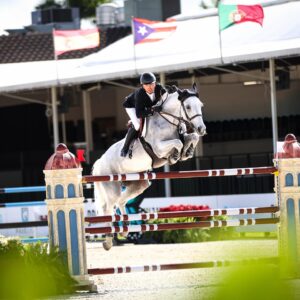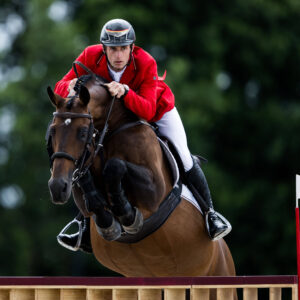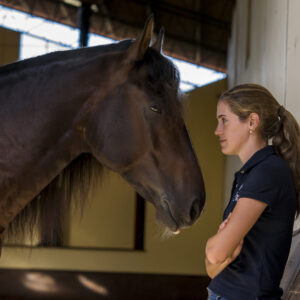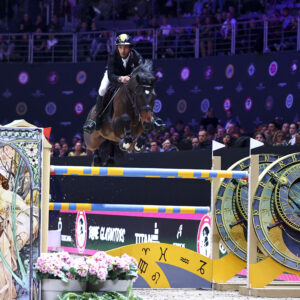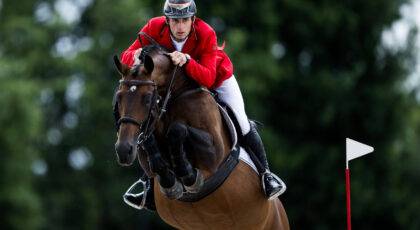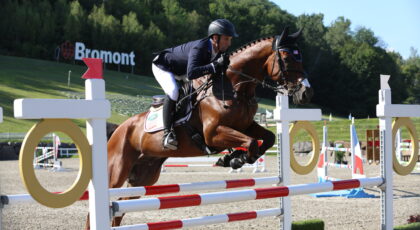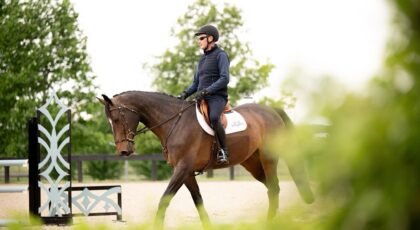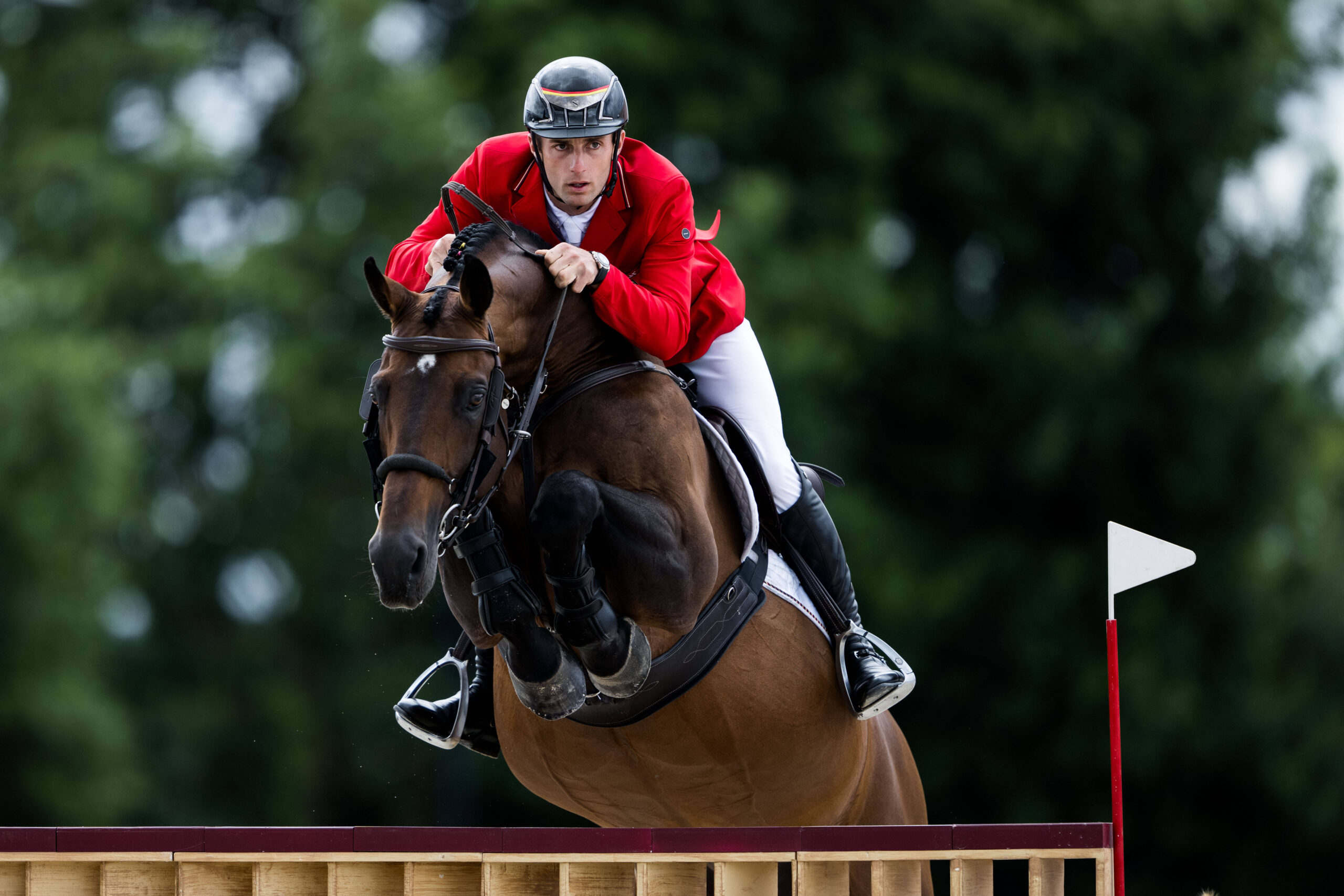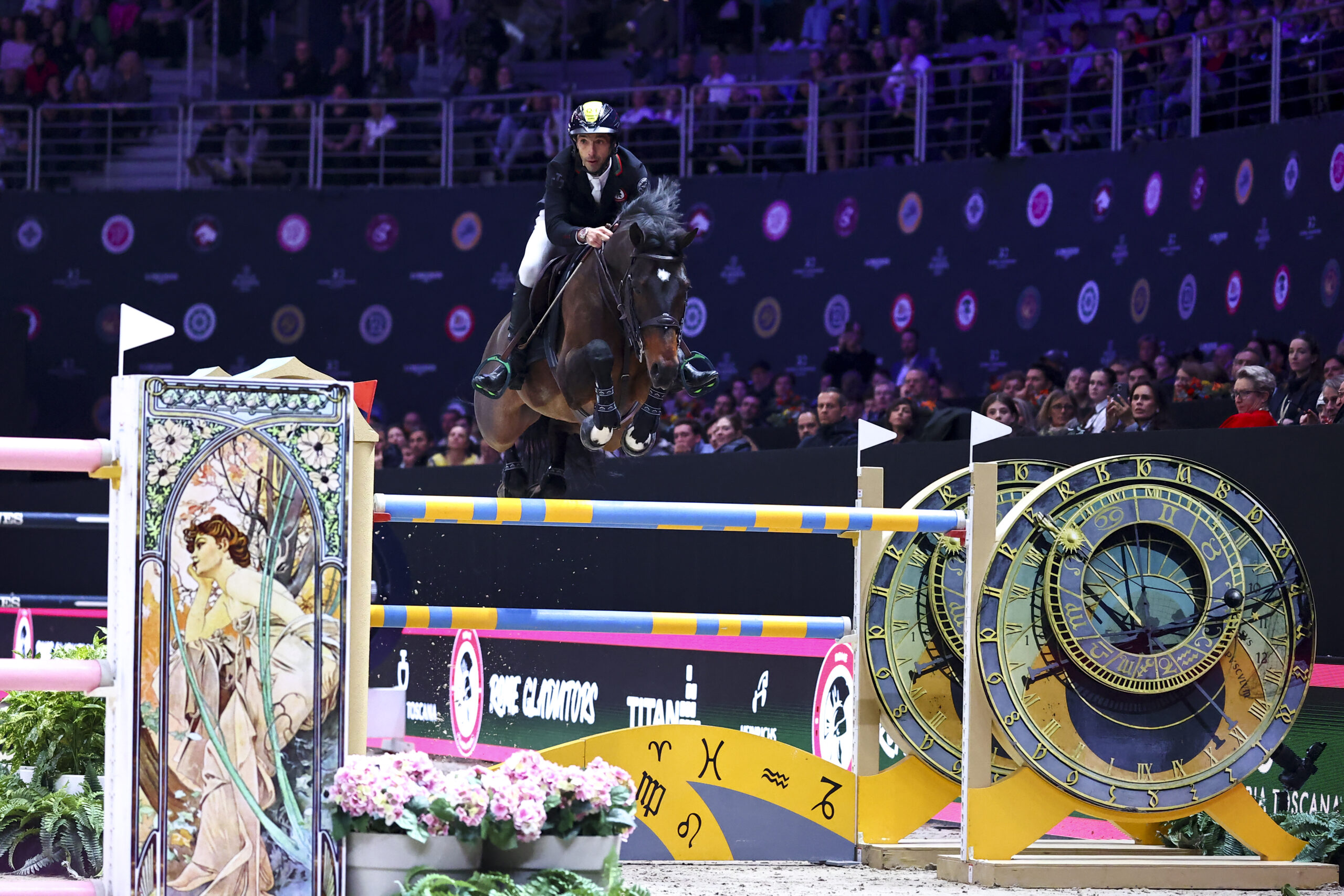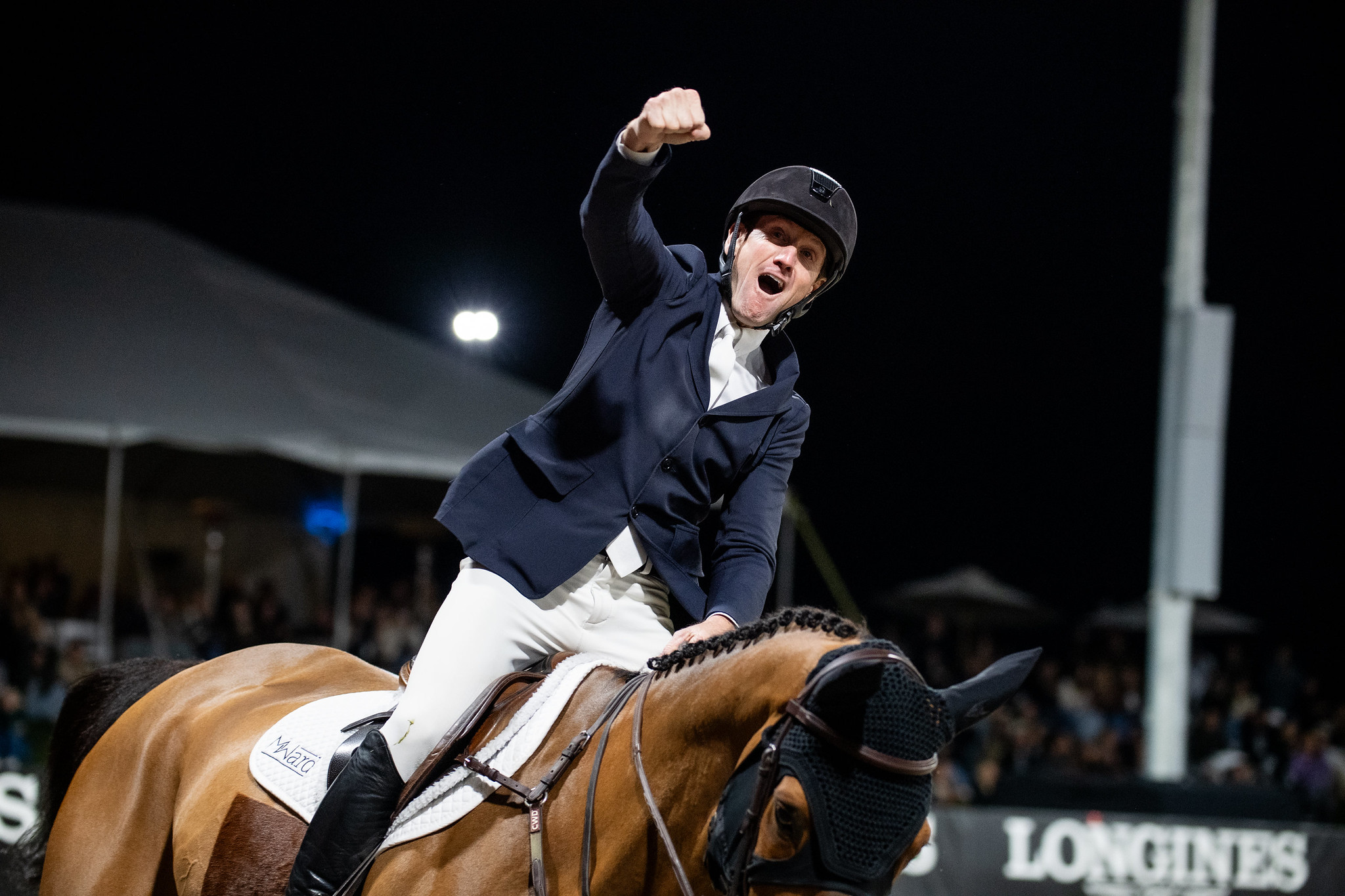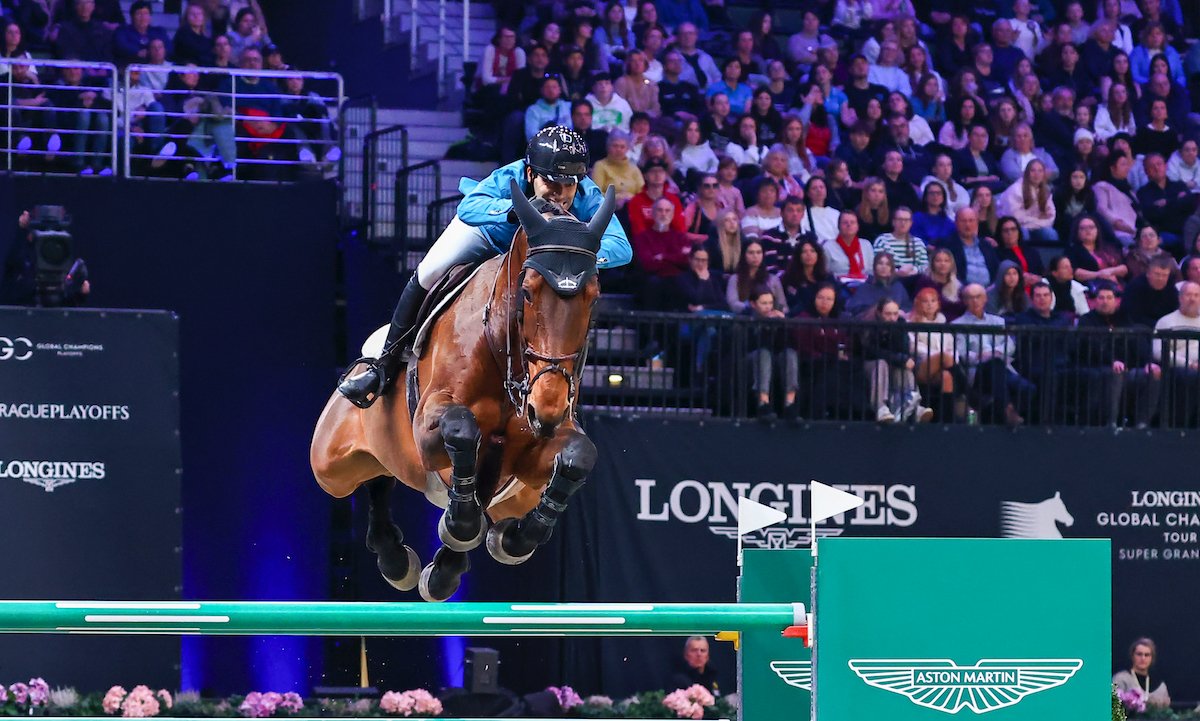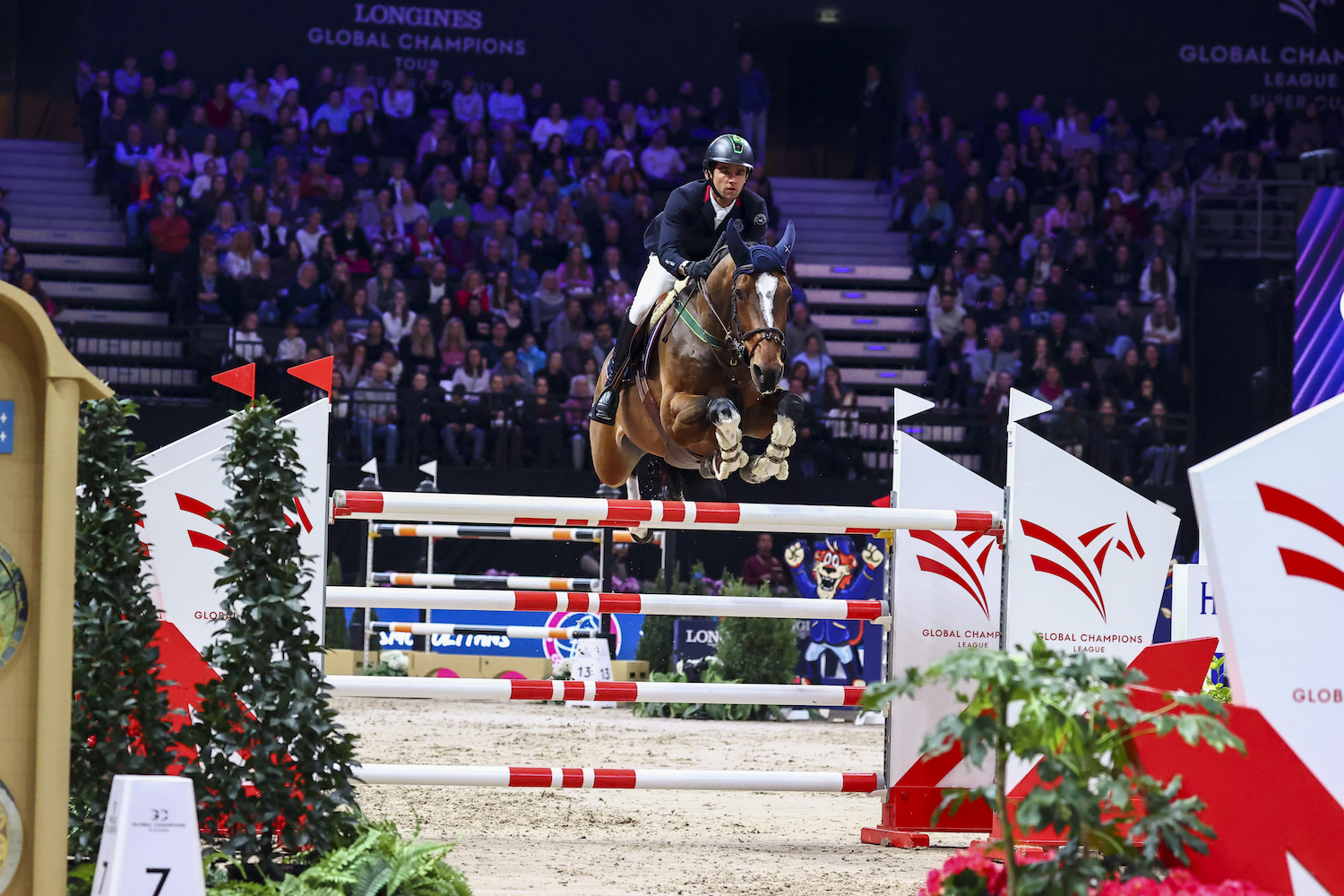Anyone who has ridden a dressage test in competition is likely familiar with the one that, from start to finish, feels like it is in fast-forward.
I beat all land-speed records once on a Morgan who was as amped up on the novel location as I was on nerves. We performed all the required movements…they were just finished too quickly for the judge to notice. “That was so fast,” my trainer remarked upon our expeditious exit, “it was almost brilliant.”
It all gets complicated when you’re riding a Freestyle, however, as keeping your choreography to the music is part of your score. In her comprehensive book Freestyle, competitor and performer Sandra Beaulieu provides five tips for staying with your music, whether your test errs toward the zippy end of the spectrum…or the rather too sedate.
***
Your horse will probably have more energy and tension at the show than he does at home, causing you to rush and get ahead of the music. You should have movements in your choreography that can be adjusted as necessary on the day of competition. In your mind you need to have a backup plan for when you get ahead of or behind your music. Your horse may spook and miss a corner or be tired and slow. Prepare ahead of time so that you don’t panic when you find yourself not in sync with your music.

The following movements are easily adjusted in the moment to help you speed up or slow down.
• Circles: The required circles included in your Freestyle choreography are not adjustable but if you are riding at First Level (dressage) or Level 1 (Western dressage) or above you can add a 10-meter trot/jog circle if you are ahead of your music. If you have a tendency to get ahead of your music, consider your choreography and make a mental note of where the ideal spots might be to add a circle if needed at a show.
• Short diagonals: Adjust the angle of your diagonal to add or make up time. Make your diagonal longer and go deep into the corners if you are ahead of your music. Shorten the diagonal and perhaps turn up the quarter line to “cut” your corner if you are behind the music.
• Shorten the arena: When you are behind your music and your choreography takes you through the short side of the arena, you can “cut off” the end of the arena to shave time. To make it look intentional, turn at the corner letter, such as M, and aim for H as if that was your new “rail.” It is better to trim your floorplan rather than go faster to catch up to your music.
• Use the quarterline instead of the long side: If you have a medium canter/lengthened lope planned on the long side of the arena, you can turn down the quarterline instead. This will also add to your degree of difficulty. If you were planning to be on the quarterline already, adjust it more toward the centerline to catch up to your music, or push it toward the rail if you are ahead of your music.
• Use your salute to accent the end of music: When you choose your final halt music, it is nice to build to a dramatic ending. If you are ahead of your music and “run out of centerline,” you can halt your horse, dramatically pause, then salute at the final note.
***
This excerpt from Freestyle by Sandra Beaulieu is reprinted with permission from Trafalgar Square Books.


 July 22, 2020
July 22, 2020 






